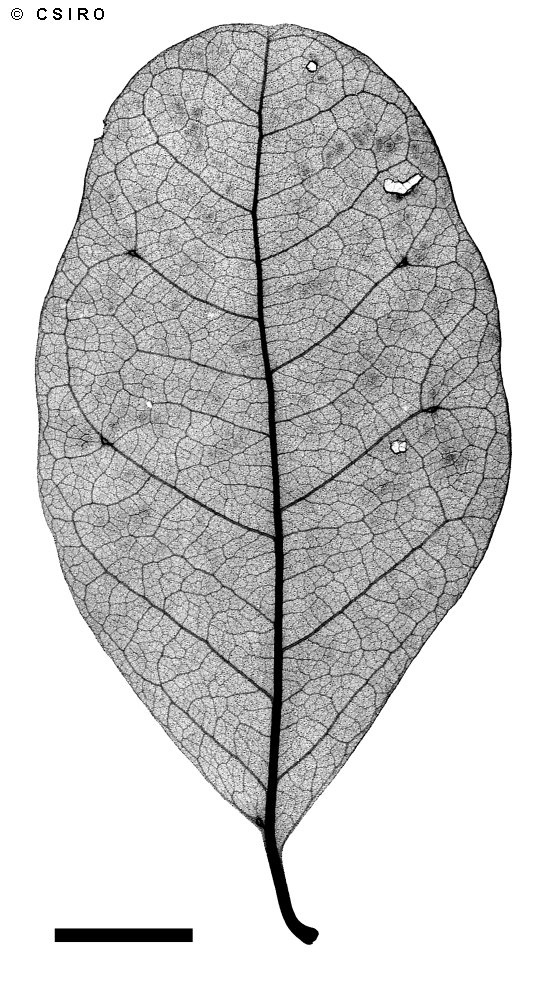Australian Tropical Rainforest Plants - Online edition
Terminalia volucris R.Br. ex Benth.

Bentham, G. (1864), Flora Australiensis 2: 498. Lectotype: "Island a 28 (Sweers Island) 17 Nov. 1802, R. Brown (BM, lectotype; K, iso)".
Yellow-wood
Dead bark layered.
Inflorescence exceeding the leaves, bracts narrowly triangular, about 1 mm long, caducous. Perianth tube pubescent, lobes triangular, about 1.5 x 1.5 mm, pilose outside, sparsely villous inside. Staminal filaments glabrous, about 2-3 mm long. Disk villous. Style villous in the lower part, glabrous in the upper part.
Mature fruits glabrous, 2-winged, body about 10-20 mm long, flattened on one side with a longitudinal wing on the other. Wings broadly elliptical to rectangular, continuous above or below the body or both. Wings about 20-70 x 20-30 mm. Seed about 10-12 x 3-5 mm, cotyledons convolute.
Features not available.
Endemic to Australia, widespread across northern Australia. Occurs in WA, NT, CYP and NEQ. Altitudinal range from near sea level to 400 m. Usually grows in open forest or savannah situations but also found in monsoon forest.
Although Terminalia oblongata ssp. oblongata is poisonous to stock, T. oblongata [1] [2] ssp. volucris is considered a useful fodder tree. Pedley (1990).
Myrobalanus volucris (R.Br. ex Benth.) Kuntze, Revisio Generum Plantarum 1: 237(1891). Terminalia oblongata subsp. volucris (R.Br. ex Benth.) Pedley, Flora of Australia 18: 327 (1990).





